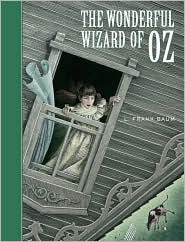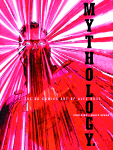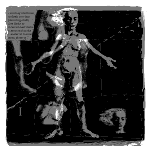I find myself in the midst of a little series of Dark Knight postings, yet it's time for the weekly Robin. Oh, what to do? I'll discuss how the Batman mythos we see in the new movies, as well as the previous movie series that started in 1989, manage to get along fine without a Robin.
Bruce Wayne's original supporting cast in the Batman comics consisted of Police Commissioner James Gordon, introduced in the very first story, and Julie Madison, Bruce's fiancée. Neither of those characters knew his secret identity as the Batman (or "the Bat-Man," as it was originally written). Julie eventually disappeared.
When the creative team introduced Dick Grayson in 1940, they didn't simply lower the average age of the cast. They also added a character who knew about Bruce Wayne's nocturnal activities and helped him. In the late 1960s, Batman co-creator Bill Finger described his thinking to comics artist and historian Jim Steranko:
Robin was an outgrowth of a conversation I had with Bob [Kane, the artist]. As I said, Batman was a combination of [Douglas] Fairbanks and Sherlock Holmes. Holmes had his Watson. The thing that bothered me was that Batman didn't have anyone to talk to, and it got a little tiresome always having him thinking. I found that as I went along Batman needed a Watson to talk to. That's how Robin came to be.
(Eventually I'll analyze this some more in a subseries I'll call "reasons for Robin.")

In 1943, the
Batman team added another supporter to the Batman team:
Alfred Pennyworth, Bruce Wayne's butler. As originally written, Alfred looked like a portly
Arthur Treacher, but that same year a Hollywood serial portrayed the character as thin and mustachioed, so the comic-book butler went off to a spa and returned with less weight and more facial hair. (Cover at left courtesy of the
Grand Comics Database.)
Alfred was originally comic relief, with a broad ethnic dialect. His shtick was wishing to be a great detective but achieving results--such as discovering his employer's secret identity--only through dumb luck. Later writers portrayed Alfred as actually smart and capable, with a background in British intelligence and the theater which had left him with very useful disguise skills.
And thus things remained (with a odd break in the 1960s that I've decided not to acknowledge) until DC Comics's
Crisis in 1986. The company rewrote the origins of some of its major characters. For Batman, the big change involved Alfred. Now, the comic books told us, he had been a servant in the Wayne household when Bruce was a boy. He (and a local physician,
Leslie Thompkins, introduced into the mythos in 1976) had cared for young Bruce after his parents were shot.

In other words, Alfred--not Dick Grayson--was Batman's oldest friend and assistant. He still had a theatrical and intelligence background, and he turned out to have another skill necessary in those darker times: combat surgeon. With
Dick off with the Titans as Nightwing and the
Robin situation in flux, Alfred became Bruce Wayne's most constant aide and confidant--in short, his Watson.
In all Batman stories since 1986, Alfred knows Bruce's secrets, perhaps better than the master himself. He offers snarky comments about Bruce's Batman habit, but in the end is what the recovery movement would label an enabler. He has helped to raise the orphan boys Bruce keeps bringing home, and assisted them on their own adventures. At a few points, Alfred even left Wayne Manor to reconnect with family in Britain or to look after Tim Drake at boarding school.

The
1989 Batman movie directed by Tim Burton and the
2005 Batman Begins directed by Christopher Nolan both adopted DC's "post-Crisis" history of Alfred. Even more than comic books, which at least had the option of thought balloons, moviemakers need sounding-boards for their heroes to talk to. And as long as Alfred is there for those conversations--particularly as depicted by a movie legend like
Michael Caine--Robin doesn't have to be.



































